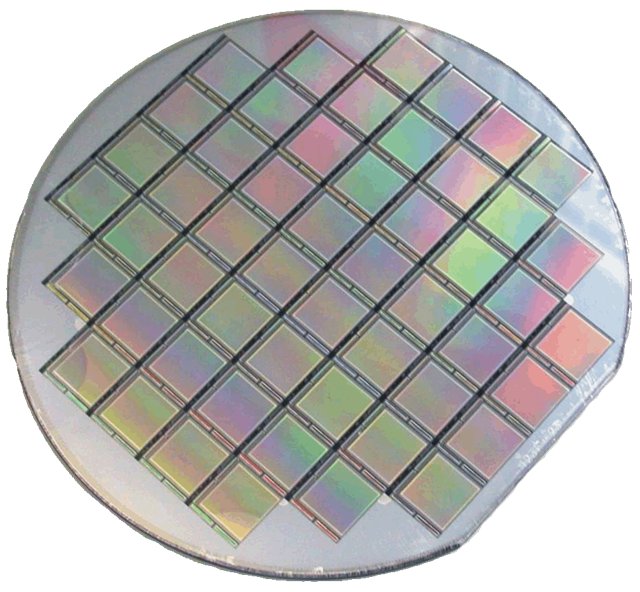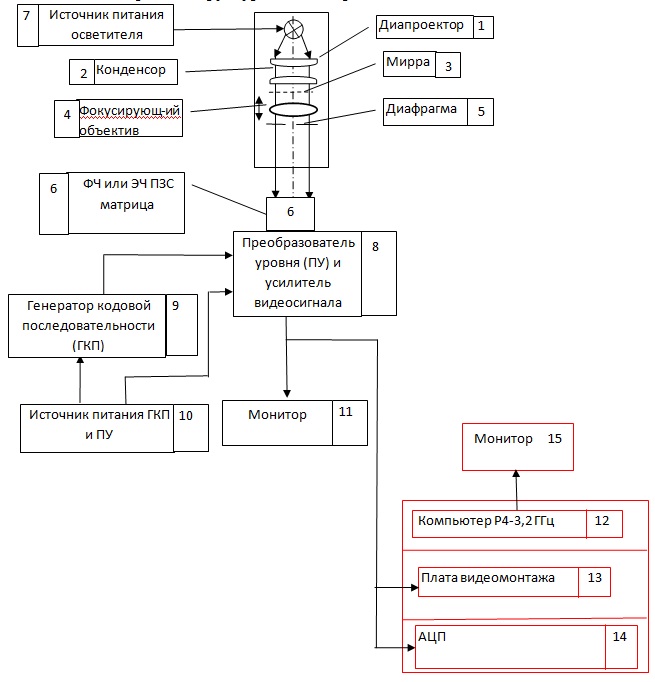Hardware-software complex for measuring CCD photoelectric characteristics
By a strange set of circumstances, I’ve been measuring various instrument parameters for quite some time now. At first it was the output control of the MEL-2 and MFLEM-1 stands developed at the TOE department at MIREA (tu), then the control of the parameters of the devices on the plates, and most recently I dealt with the control of the parameters of the FPGA (photosensitive devices with charge coupling) at the enterprise FSUE NPP "Pulsar".
Under the cut, I will tell you about how the automation of parameter measurements was carried out.

Earlier in the enterprise, measurements were carried out using television and oscillographic methods. For the rulers (roughly speaking, one row of the matrix), such methods were simple and met the accuracy requirements, etc.
But then matrices began to appear. For the first low-resolution matrices, such methods were still somewhat suitable, although the oscilloscope could select only one row of the matrix, it became more difficult to count, longer, etc. For example, in order to calculate the root-mean-square noise voltage, it was necessary to have the voltage value of each photosensitive element, and it took from 50 to 128 (according to GOST) frames, after which these data still needed to be processed. All this took a lot of time, and in complex calculations it was easy to make a mistake.
Therefore, it was decided to switch to automated digital measurements.
At the moment, I no longer work at Pulsar, and unfortunately, I did not have photos of the stand that was used for these measurements. However, I am ready to show the scheme of the stand: In essence, a simple device. Conventionally, we divide into an optical mode setting unit, an electric mode setting unit, and a measurement unit, including a computer and an ADC.

The goal of the whole action was to write software for this stand, which would allow to quickly, simply and efficiently measure the main photoelectric characteristics of matrix FPSS.
I will not bore readers with searches, the mathematical apparatus, and the like; I will describe only the most important thing.
The list of characteristics, their description, formulas are in GOST 28953-91 “Photosensitive devices with charge transfer. Methods of measuring parameters ”
The L-Card E20-10 module was used as an ADC (for the simple reason that, firstly, it was already available in the laboratory, and secondly, it was quite cheap).
The software was implemented in C ++ builder
All the tasks facing me were completed.
In this article I tried to introduce you very briefly with my experience in the transition from analog to digital measurements of photoelectric parameters, I have a very limited budget and a minimum of programming knowledge. In general, I think the work was done well, because all goals have been achieved, but at the same time, the prospects of this method are visible - you can optimize the algorithms, add other ADC modules, measure other instrument parameters, switch to full automation using the lighting control and focusing of the program itself.

Start
Earlier in the enterprise, measurements were carried out using television and oscillographic methods. For the rulers (roughly speaking, one row of the matrix), such methods were simple and met the accuracy requirements, etc.
But then matrices began to appear. For the first low-resolution matrices, such methods were still somewhat suitable, although the oscilloscope could select only one row of the matrix, it became more difficult to count, longer, etc. For example, in order to calculate the root-mean-square noise voltage, it was necessary to have the voltage value of each photosensitive element, and it took from 50 to 128 (according to GOST) frames, after which these data still needed to be processed. All this took a lot of time, and in complex calculations it was easy to make a mistake.
Therefore, it was decided to switch to automated digital measurements.
Stand description
At the moment, I no longer work at Pulsar, and unfortunately, I did not have photos of the stand that was used for these measurements. However, I am ready to show the scheme of the stand: In essence, a simple device. Conventionally, we divide into an optical mode setting unit, an electric mode setting unit, and a measurement unit, including a computer and an ADC.

Formulation of the problem
The goal of the whole action was to write software for this stand, which would allow to quickly, simply and efficiently measure the main photoelectric characteristics of matrix FPSS.
Decision
I will not bore readers with searches, the mathematical apparatus, and the like; I will describe only the most important thing.
The list of characteristics, their description, formulas are in GOST 28953-91 “Photosensitive devices with charge transfer. Methods of measuring parameters ”
The L-Card E20-10 module was used as an ADC (for the simple reason that, firstly, it was already available in the laboratory, and secondly, it was quite cheap).
The software was implemented in C ++ builder
Summary
All the tasks facing me were completed.
- It was written software that allows you to measure a dozen of the main parameters of the matrix FPSS. Moreover, there are no restrictions on the number of photosensitive cells in the device - this can be a line of 128 points, or a matrix larger than 500 by 500.
- Significantly increased measurement speed. Now all the parameters, except for one (mean square noise voltage), are measured in fractions of a second.
- The software part of the complex is user friendly and does not require staff training. When the program starts, it is automatically connected to the ADC module, after which it reports readiness and offers to select the necessary parameters and properties (for example, whether to plot a histogram of the output signal). Then the program starts measuring, prompting the user to adjust the illumination of the device (this is necessary if the output signal and the dark signal, saturation voltage are measured in series), after which a report ready for printing in Microsoft Word format is opened.
- Improved accuracy of measurements.
Conclusion
In this article I tried to introduce you very briefly with my experience in the transition from analog to digital measurements of photoelectric parameters, I have a very limited budget and a minimum of programming knowledge. In general, I think the work was done well, because all goals have been achieved, but at the same time, the prospects of this method are visible - you can optimize the algorithms, add other ADC modules, measure other instrument parameters, switch to full automation using the lighting control and focusing of the program itself.
